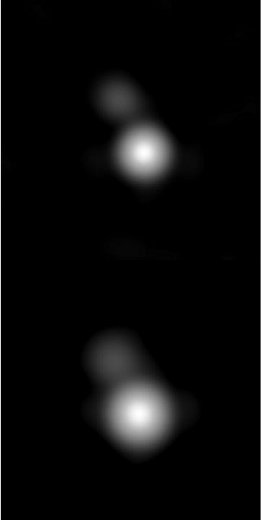

|
First spatial resolution of the stellar components
|
Russian version |
|
CH Cyg is one of the most fascinating as well as the brightest and closest
symbiotic stars. It's composed of an M7 giant and a hot companion, most
likely an accreting white dwarf. The hot component shows very spectacular
activity: irregular outbursts accompanied by fast, massive outflows and
jets. The light curves of CH Cyg show changes with timescales ranging
from minutes (flickering observed during active phases) through several
hundred days (pulsations and rotation of M-giant) up to dozen of years
(orbital motion of the components, activity phases).
|

Fig.1.
Resolved BTA speckle images of the symbiotic binary CH Cyg obtained
through the
 / /  =545/20nm
and =545/20nm
and
 / /  =600/40nm
filters. The field of view is 0.2". North is up and east to the left. =600/40nm
filters. The field of view is 0.2". North is up and east to the left.
|